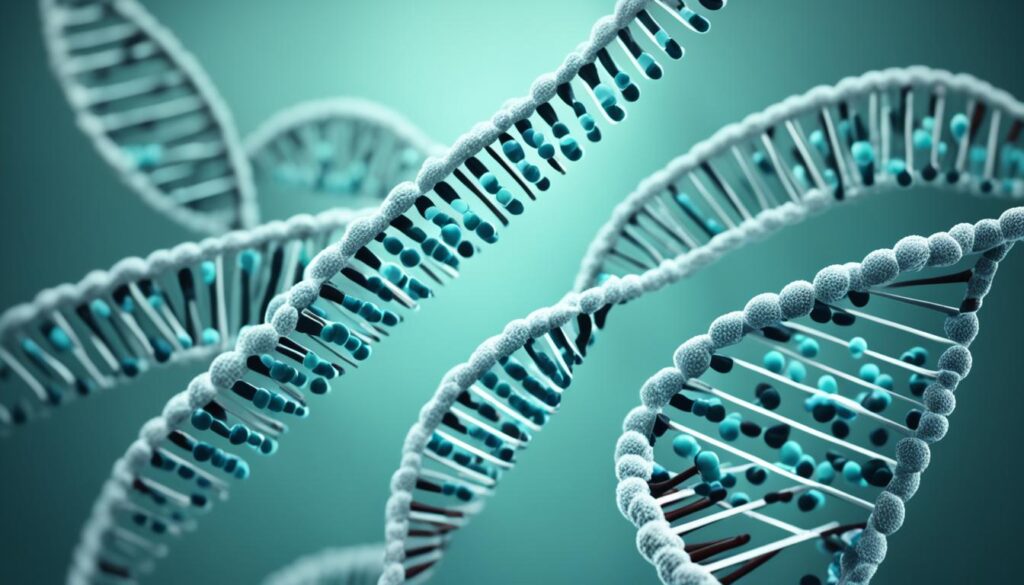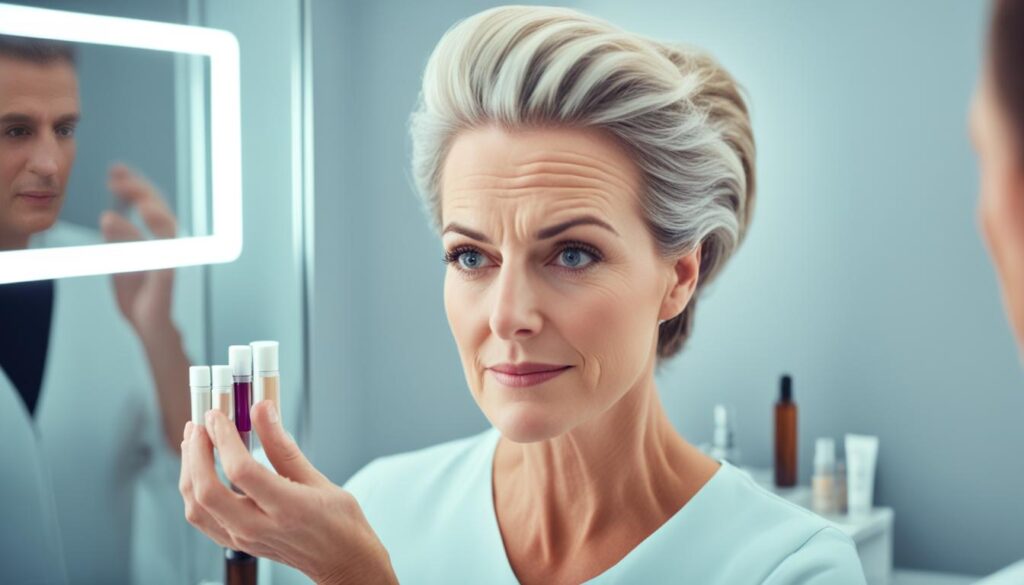Are you one of the countless individuals grappling with the frustrating and often perplexing issue of hair loss? If so, you’re not alone. Hair loss, medically known as alopecia, can be a deeply distressing experience, particularly for women.
But fear not, for this article is here to shed light on the problem and empower you to take control of your hair journey.
Hair loss can be triggered by a variety of factors from genetics and medical conditions to stress and lifestyle choices. Whether you’re dealing with thinning hair bald patches, or a receding hairline it’s important to understand the underlying causes and explore effective treatments to promote healthy hair growth.
By diving into the complexities of alopecia areata, male pattern baldness, and female hair loss, we’ll provide you with the knowledge and tools to navigate this challenge with confidence.
But the real question is, what’s causing your hair loss, and what can you do about it? In the following sections we’ll explore the various types of hair loss, the factors that contribute to it, and guide you through a range of proven treatments and lifestyle changes to promote healthy, vibrant hair. Get ready to embark on a transformative journey and reclaim your hair’s natural beauty.
Key Takeaways
- Hair loss, also known as alopecia, is a common and often distressing experience, particularly for women.
- Understanding the underlying causes of hair loss, whether genetic, medical, or stress-related, is crucial for finding effective solutions.
- Exploring the different types of hair loss, such as alopecia areata, male pattern baldness, and female hair loss, can provide valuable insights.
- Utilizing a combination of medical treatments and lifestyle changes can help promote healthy hair growth and regain confidence.
- Embracing self-acceptance and seeking support can be transformative in the hair loss journey.
Understanding Hair Loss in Women
Hair loss, often referred to as alopecia, is a common concern for many women. Understanding the various types of hair loss and their underlying causes is crucial in addressing this complex issue. From subtle thinning to dramatic shedding and bald patches, the hair loss journey can be a rollercoaster of emotions, but with the right knowledge and approach, individuals can take control of their hair health.
What is Hair Loss?
It’s normal for individuals to lose up to 125 hairs per day as part of the natural hair growth cycle. However, when hair loss exceeds this amount or starts to affect the overall appearance and density of the hair, it may signal a more serious underlying condition. Hair shedding, thinning hair, and the development of bald patches are all common manifestations of hair loss in women.
Types of Hair Loss in Women
Women can experience various types of hair loss, each with its own unique characteristics and underlying causes. Telogen Effluvium, for instance, is a type of hair loss triggered by stress or major life events, while Female Pattern Hair Loss FPHL is a genetic condition characterized by gradual thinning at the top and front of the scalp. Alopecia areata, an autoimmune disorder, can result in patchy hair loss or even complete baldness.
Causes of Female Hair Loss
The causes of hair loss in women can be multifaceted, ranging from genetic predisposition and hormonal imbalances to medical conditions and environmental factors. Polycystic Ovary Syndrome PCOS, a hormonal disorder, can contribute to Female Pattern Hair Loss. Likewise, major life events, such as pregnancy, childbirth, and menopause, can trigger temporary Telogen Effluvium. Understanding the specific causes underlying an individual’s hair loss is crucial in developing an effective treatment plan.

Genetics and Hair Loss
When it comes to hair loss, genetics play a significant role, particularly in the case of Female Pattern Hair Loss FPHL and Androgenetic Alopecia. These conditions are deeply rooted in our genetic makeup, shaping the way our hair responds to various hormonal and environmental factors.
Female Pattern Hair Loss FPHL
FPHL is a polygenic condition, meaning it’s caused by a combination of genetic factors inherited from both parents. In this type of hair loss, the hair follicles become increasingly sensitive to the effects of dihydrotestosterone DHT, a byproduct of the male hormone testosterone.
This sensitivity leads to a gradual thinning of the hair, especially at the top and front of the scalp, creating a characteristic pattern of hair loss that is often referred to as female pattern baldness.
Androgenetic Alopecia
Androgenetic Alopecia, commonly known as male pattern baldness, is another genetic condition that can affect both men and women. Similar to FPHL Androgenetic Alopecia is characterized by the hair follicles’ sensitivity to DHT leading to a progressive thinning and recession of the hairline, particularly at the temples and crown of the head. While this condition is more prevalent in men, it can also occur in women, often presenting a more diffuse pattern of hair loss across the scalp.
Understanding the genetic underpinnings of these hair loss conditions is crucial for developing effective treatment strategies. Researchers are continuously exploring the role of genetics in hair loss, with the ultimate goal of finding targeted solutions that can address the root causes and provide personalized hair regrowth solutions for those affected by female pattern hair loss, androgenetic alopecia, and other hair loss challenges.

Medical Conditions and Hair Loss
While genetics play a significant role in hair loss, certain medical conditions can also contribute to this common concern for women. From hormonal imbalances to autoimmune disorders, understanding the underlying causes is crucial for addressing the problem effectively.
Polycystic Ovary Syndrome PCOS
Polycystic Ovary Syndrome PCOS is a hormonal disorder that affects up to 10% of women of childbearing age. This condition can lead to an imbalance of male hormones, known as androgens, which can then trigger Female Pattern Hair Loss. Women with PCOS may experience thinning hair, particularly at the top and front of the scalp, as the sensitivity to androgens can cause the hair follicles to shrink over time.
Hormonal Changes
Fluctuations in hormones during major life events, such as pregnancy, postpartum, and menopause, can also cause temporary hair shedding known as Telogen Effluvium. During these periods, a larger number of hair follicles may enter the resting telogen phase prematurely, leading to excessive hair loss that can be particularly distressing for women.
Autoimmune Disorders
Autoimmune disorders, such as alopecia areata, can also contribute to hair loss in women. In these cases, the body’s immune system mistakenly attacks the hair follicles, leading to patchy hair loss or even complete baldness in severe cases. Understanding the underlying cause of the autoimmune response is crucial for developing effective treatment strategies.

Stress and Hair Loss
Stress, both physical and emotional can have a significant impact on hair health and contribute to hair loss. One of the most common stress-related hair loss conditions is Telogen Effluvium, which occurs when a stressful event such as a major illness, surgery or emotional trauma, pushes a large number of hair follicles into the resting telogen phase prematurely. This can lead to excessive shedding, especially along the temples and sides of the scalp.
Telogen Effluvium
Telogen Effluvium is a temporary form of hair loss that can be triggered by a variety of stressors, including physical or emotional trauma, drastic changes in diet or medication, and even childbirth.
When the body experiences a significant amount of stress, it can disrupt the natural hair growth cycle, causing more hair follicles to enter the telogen resting phase prematurely. This results in increased shedding, which can be noticeable several months after the stressful event.
Managing Stress for Healthy Hair
Implementing effective stress management techniques can be crucial for maintaining healthy hair and preventing further hair loss. Strategies such as regular exercise mindfulness practices, and getting enough sleep can help regulate the body’s stress response and promote a healthier hair growth cycle.
Additionally, seeking support from a mental health professional or joining a hair loss support group can provide valuable coping mechanisms and a sense of community during this challenging time.
| Stress Management Techniques | Benefits for Hair Health |
|---|---|
| Exercise | Reduces stress hormones, improves blood circulation, and supports hair follicle function. |
| Meditation and Mindfulness | Lowers cortisol levels, decreases inflammation, and promotes a calm, balanced state. |
| Adequate Sleep | Allows for proper cellular repair and regeneration, essential for hair growth. |
| Social Support | Provides emotional comfort and a sense of community, reducing stress-related hair loss. |
By addressing the underlying stress and implementing healthy coping mechanisms individuals can take proactive steps to support their hair’s resilience and promote a healthy, vibrant appearance.
You and Hair Loss Shedding Light on the Problem
Dealing with hair loss can be a complex and frustrating experience, but it’s important to approach the problem with a clear understanding of the underlying causes and realistic expectations for treatment. By working closely with a dermatologist, individuals can identify the root cause of their hair loss, whether it’s genetic related to a medical condition, or triggered by stress.
Identifying the Root Cause
Determining the specific type of alopecia is the first step in addressing hair loss. Some common causes include Female Pattern Hair Loss FPHL which is linked to genetic sensitivity to dihydrotestosterone DHT, and Telogen Effluvium, which can be triggered by stress, illness, or hormonal changes. Understanding the underlying cause is crucial for selecting the most effective hair loss treatments and promoting hair regrowth.
Realistic Expectations
It’s important to have realistic expectations when it comes to hair loss and the potential for regrowth. While some treatments, such as minoxidil or low level laser therapy, can be effective in stimulating new hair growth, the results may vary from person to person. Patience and consistent use of recommended treatments are key, as hair restoration can be a gradual process.
By understanding the limitations and time frame involved, individuals can better navigate their hair loss journey with a positive and realistic mindset.

Treatments for Female Hair Loss
As women navigate the complex journey of hair loss, there are several effective treatments available to address this common issue. From the well researched minoxidil to innovative low-level laser therapy and hair transplants, these solutions offer hope and help in restoring hair growth and confidence.
Minoxidil
Minoxidil, a topical solution applied directly to the scalp, is one of the most widely used and extensively studied treatments for female pattern hair loss and telogen effluvium. This powerful ingredient works by stimulating the growth of new hair follicles and prolonging the active growth phase of the hair cycle, leading to thicker fuller hair over time.
Low Level Laser Therapy
Low-level laser therapy, or LLLT has emerged as a non-invasive and effective treatment for hair loss in women. This innovative technology uses specific wavelengths of light to energize the cells within the hair follicles, promoting increased blood flow and nutrient delivery to encourage new hair growth and prevent further shedding.
Hair Transplants
For women with more severe or persistent hair loss, hair transplants can be a transformative solution. This surgical procedure involves carefully extracting healthy, active hair follicles from areas of the scalp with abundant growth and transplanting them to the thinning or balding areas, resulting in natural-looking and long-lasting hair restoration.

Lifestyle Changes for Healthy Hair
While medical treatments can be highly effective in addressing hair loss, adopting certain lifestyle changes can also play a crucial role in promoting healthy hair growth and preventing further shedding. By making mindful adjustments to your diet, stress management techniques, and hair care routine, you can nourish your locks from the inside out and embark on a transformative hair journey.
Nutrient Rich Diet
A balanced, nutrient-rich diet is essential for maintaining the health and vitality of your hair. Ensure your meals are packed with protein, iron, zinc, and vitamins like biotin and vitamin C, all of which contribute to the growth and strength of your hair follicles. Incorporate foods such as lean meats, eggs, leafy greens, nuts, and citrus fruits to support your hair’s natural growth cycle.
Stress Management
Stress, both physical and emotional, can have a significant impact on hair health, leading to conditions like Telogen Effluvium. To mitigate the effects of stress on your hair, explore effective stress management techniques, such as meditation, yoga, or engaging in regular exercise. By prioritizing your mental well-being, you can create an environment conducive to healthy hair growth and prevent further hair loss.
Gentle Hair Care
The way you care for your hair can also make a difference in its overall health and resilience. Opt for gentle, sulfate-free shampoos and conditioners, avoid excessive heat styling, and be gentle when brushing or towel-drying your hair. These simple adjustments can help minimize breakage and damage, allowing your hair to thrive and flourish.
By incorporating these lifestyle changes into your daily routine, you’ll be taking proactive steps towards achieving healthy, vibrant hair and minimizing the impact of hair loss. Remember a holistic approach that addresses both medical and lifestyle factors is often the most effective path to hair growth solutions and long-term hair loss prevention.
Embracing Your Hair Journey
While navigating the challenges of hair loss can feel overwhelming, it’s crucial to remember that your hair journey is uniquely your own. Embracing self-acceptance and learning to love your natural hair, regardless of its current state, can be a transformative step in the healing process.
Self Acceptance
Letting go of unrealistic expectations and embracing your hair’s natural texture, color, and density is the first step towards true self-acceptance. Acknowledge that alopecia, bald patches, or thinning hair do not define your worth or beauty. Take the time to celebrate the features you love about yourself, and focus on cultivating an empowered mindset that celebrates your individuality.
Support Groups
Connecting with others who understand the unique challenges of hair loss can be an invaluable source of comfort and encouragement. Seek out support groups, both online and in your local community, where you can share your experiences, learn from others, and find solace in the knowledge that you are not alone on this journey.
When to See a Dermatologist
If you are experiencing significant or persistent hair loss, it’s crucial to consult a board-certified dermatologist. These specialists can provide a proper diagnosis and recommend the most appropriate treatment options for your specific case of alopecia or other scalp disorders. Some key signs that it’s time to seek professional help include the presence of red patches, significant itching or scabbing associated with the hair loss, as these can be indicators of a more serious condition, such as scarring alopecia.
Signs of Scarring Alopecia
Scarring alopecia is a type of permanent hair loss caused by inflammation and destruction of the hair follicles. The telltale signs include patchy hair loss, redness, and scaling or crusting on the scalp. If you notice these symptoms, it’s essential to see a dermatologist promptly, as early intervention is crucial for preventing further hair loss and potential scarring.
Rapid Hair Loss
Sudden or rapid hair loss, often described as excessive shedding or clumps of hair coming out, can be a sign of an underlying health condition or a reaction to a medication or treatment. In such cases, it’s vital to consult a dermatologist to identify the root cause and develop an effective hair loss treatment plan. Prompt action can help mitigate the impact of rapid hair loss and promote healthy hair regrowth.
Debunking Hair Loss Myths
Navigating the complex world of hair loss can be a minefield of myths and misconceptions. It’s time to separate fact from fiction and shed light on the truth behind common alopecia claims. From the belief that brushing causes hair hair loss treatments to the myth that wearing hats leads to hair regrowth, we’re here to debunk the misinformation and empower you with a clear, evidence-based understanding of your bald patches.
One persistent myth is that stress is the sole driver of hair loss. While stress can certainly contribute to temporary shedding, known as Telogen Effluvium, it’s not the only factor at play. Genetics, hormonal imbalances, and underlying medical conditions can all play a significant role in hair loss. It’s important to work with a dermatologist to identify the root cause and develop a targeted treatment plan.
Another common misconception is that shampoos and hair products can “clog” the follicles, leading to hair loss. In reality, the vast majority of commercially available hair care products are safe for use and do not directly contribute to alopecia. However, individuals with sensitive scalps or certain medical conditions may benefit from switching to gentler, sulfate-free formulas.
Lastly, the myth that hair dye and chemical treatments cause permanent hair loss is simply not true. While these processes can temporarily weaken or thin the hair, they do not directly lead to long-term hair regrowth issues. As long as proper care and precautions are taken, coloring and styling your locks can be enjoyed without fear of damaging your bald patches.
By debunking these misconceptions, we empower individuals to approach their hair loss treatments with a clear understanding of the science and a renewed sense of hope. Remember, knowledge is power, and with the right information, you can take control of your hair journey and embrace your unique beauty.
Conclusion
As we conclude our journey through the complex world of hair loss, it’s important to remember that you are not alone. Whether you’re grappling with alopecia, struggling to achieve hair regrowth, or simply seeking effective hair restoration treatments to combat hair loss prevention, there are solutions within your reach.
Through our exploration of the various causes and types of hair loss, from genetics and medical conditions to stress and lifestyle factors, we’ve aimed to provide you with a comprehensive understanding of this common, yet often misunderstood, issue. By arming you with knowledge, we hope to empower you to take control of your hair journey and embrace your unique beauty, no matter the challenges you may face.
Remember, hair loss is not the end of the world it’s simply a hurdle to overcome. With the right support, the proper treatment plan, and a positive mindset, you can overcome the obstacles and reclaim the healthy, vibrant hair you deserve. So let’s raise a glass to the resilience of the human spirit and the power of self-acceptance. Here’s to your hair-raising success!





